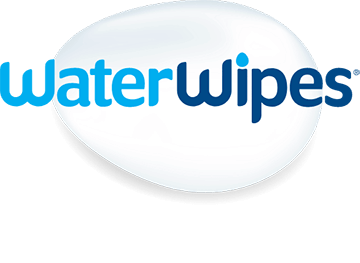What helps premature babies’ skin?
When a baby is born premature, their skin is not yet fully developed, but the good news is that they’ll continue to grow outside the womb just as they would inside2. The development of premature baby skin takes time and a little extra care to help them grow strong and healthy. Keep in mind that advice for caring for their skin can change as your preemie grows.
Transparent, wrinkly and dry skin
Premature baby skin can look a little transparent or shiny. Thin and fragile, their protective barrier is underdeveloped, which is why premature baby skin can be prone to infection3. It’s also normal for your premature baby to have dry or flaky skin too1.
At around 30 to 32 weeks, your premature baby’s skin can appear wrinkly or loose1 – but don’t worry. This is because their skin surface has increased, but they still need to plump up and fill out. At this stage, premature babies don’t have any body fat beneath the skin, but that will soon come.
Interesting fact: This is also why premature babies are often kept in a warm incubator. Their loose skin and lack of body fat means they need help maintaining a steady body temperature1.
Caring for premature skin
Your Neonatal Intensive Care Unit (NICU) practitioners will know what’s best for your baby and can help guide you on how to look after their skin while caring for and comforting them.
You can care for your premature baby’s skin by using soft, cotton clothing that won’t cause irritation. You should also check with your baby’s nurse or doctor before putting anything on their skin1.
According to Robert Guaran, Neonatology Advisor NSW Perinatal Services, “a newborn baby’s skin does not have the barrier layers of cells of older children. Parents should avoid chemicals, including fragrances, that may be directly absorbed across their baby’s sensitive skin. This is especially important for Premature babies.”
So, even if your premature baby’s skin is looking a little dry, it’s really important not to use any moisturising products, oils, or lotions4. At this stage, their skin is much too delicate. Any dryness should improve by itself eventually. However, simple products such as WaterWipes are ideal for sensitive preemie skin.
Premature babies bond with you through touch. Once you have the green light from your NICU practitioners, it can be soothing for your baby if you warm your hands and place them carefully on their back or head. Keeping your hands still and gentle is key, as too much pressure can become stressful for preemie babies1.
How often should you bathe a premature baby?
Your nurses and doctors can advise you on when and how to start bathing your premature baby. It’s usually when their health and temperature are stable4. How often you bathe your premature baby depends on their skin condition. It’s recommended that you:
Bathe them no more than two or three times a week to avoid irritation4.
Use tepid water and cotton wool to wash their face, neck, and bottom in between baths4.
Make sure bath water is evenly warm, not hot4.
Test the water with your wrist or elbow to check the temperature4.
Check the water for the recommended temperature of 30°C12.
Help maintain their body temperature by bathing them somewhere draught-free4 and at room temperature (approximately 22°C)12.
Keep a cotton towel nearby ready to wrap them up and dry them thoroughly.
When do premature babies get their skin colour?
Regardless of ethnicity, most premature babies are born with dark red or even purple skin6. This will calm down to red as they begin to breathe air. Redness usually fades within the first day, but their hands and feet may have a blue tinge for a few days6. This is nothing to worry about, but if they begin to turn blue anywhere else, this isn’t normal and you should speak to the NICU team6.
Do premature babies skin colour change?
Premature babies’ skin can change from dark red, and purple to red over the first few days after they’re born. Around 80 per cent of premature babies7 may also take on a yellow colouring in the skin and eyes, known as jaundice.
Jaundice typically resolves itself after one or two weeks as their red blood cells settle down, but it’s a good idea to seek medical attention to be sure they’re doing okay7. Especially if it worsens, as it could indicate a problem6.
Your NICU practitioners should examine your preemie baby’s skin all over every day, or as frequently as required, to see how they’re progressing5.
Premature babies’ skin will start resembling a full-term baby by two to three weeks old, although this can vary depending on how prematurely your baby was born5. However, they may not reach complete skin maturity for another nine weeks, so you must continue to follow medical advice.
How Larissa dealt with Jackson’s premature baby skin
Larissa Lawrence endured a pregnancy and premature birth that would be a mother’s greatest fear, yet due to the incredible work of the NICU team and the support of the Miracle Babies Foundation and WaterWipes, Larissa and her partner can now continue their parenting journey with their healthy baby Jackson.
Around six per cent of babies born in the UAE are premature8. Having a newborn baby is already an overwhelming experience, and if your baby is born premature this can make the first few weeks an extremely emotional and traumatic experience.
When Larissa and her partner found out they were expecting twins, they knew their journey was going to be harder than they thought. But nothing could have prepared the couple for what was to come. Just 25 weeks into Larissa’s pregnancy, one of the twin boys sadly passed away. This was an incredibly difficult and emotional time for the couple.
“Just as we were coming to terms with the loss, I went into labour with his brother at 27 weeks,” said Larissa.
Larissa then spent the next 90 days in the NICU with her newborn baby, Jackson. He had a positive NICU experience growing stronger each day. After one month, Jackson came off continuous positive airway pressure (CPAP), which helped keep him stable, and went onto high-flow oxygen. Soon after, he was breathing by himself.
“I found a lot of positives that went along with our NICU experience. We were taught so much about how to look after our baby, which was a big advantage as first-time parents,” said Larissa.
“They taught us the proper ways to bathe him, check his temperature, and most importantly how to change his nappy. The main difference I noticed was they only use soft disposable towelettes with plain water instead of baby wipes.”
It was after the couple returned home with Jackson that he received his first nappy rash. His skin was extremely sensitive, and his parents hated seeing Jackson’s skin looking so sore, so Larissa checked with the nurse to see what the best cure for nappy rash was.
“The nurse said the best way to help was to use cotton wool and water, however, this felt impractical when changing countless nappies a day,” said Larissa.
The NICU Survival Pack
Larissa knew to avoid certain baby products, including baby wipes, as they can contain harsh chemicals, particularly for Jackson’s sensitive skin. It was when Larissa received a Miracle Babies NICU Survival Pack containing WaterWipes that she found a solution to her newborn’s nappy rash.
“The wipes in the Miracle Baby pack were a game-changer. WaterWipes contain 99.9 per cent water with just a drop of fruit extract, making them safe to use on a newborn baby. His rash went away almost immediately. One year on, we still only use WaterWipes and still have no rashes.
“I’m so grateful to WaterWipes and Miracle Babies for providing a practical solution to Jackson’s sensitive skin.”
WaterWipes x Miracle Babies Foundation
WaterWipes teamed up with Miracle Babies Foundation to provide wipes suitable for newborns as part of Miracle Babies’ NICU Survival Pack. These packs are provided to families in participating hospitals to equip parents with vital tools and resources for premature babies.
“The simple ingredients in WaterWipes can be very reassuring. With so many concerns and things to think about, it’s important that parents who have had a premature baby feel confident that they are doing the best for their baby,” Kylie Pussell CEO and Co-Founder Miracle Babies Foundation.
WaterWipes are the world’s purest vegan, cruelty-free, and sensitive baby wipes and have been carefully designed to be gentle on babies’ sensitive skin. They provide gentle cleansing for the most delicate newborn skin and are so gentle they can be used on premature babies.
FAQS
When should you start skin-to-skin for premature babies?
Research from the World Health Organization (WHO) advises that skin-to-skin contact (also known as kangaroo care) should begin immediately after birth, even with premature babies born before 37 weeks of pregnancy9. Globally, one in ten babies are born prematurely. New studies show that skin-to-skin can reduce infections and hypothermia, as well as improve feeding9.
How long should you do skin-to-skin with a preemie?
Skin-to-skin is important for premature babies in the NICU, helping them maintain warmth and improve their heart rate, breathing, and sleep10. It’s a good idea to do skin-to-skin for at least an hour10, or for as long as you and your baby are comfortable. Your medical practitioners can help advise how long and often to do skin-to-skin.
What is the most common neonatal skin condition?
Some of the most common premature baby skin conditions include erythema toxicum (skin rashes), red skin, strawberry hemangioma6, and jaundice. Premature babies may also have noticeable body hair, known as lanugo. It’s perfectly normal and will go away on its own6.
What are the skin abnormalities in neonates?
Erythema toxicum appears like a skin rash but is completely harmless and benign11. Sometimes it can resemble small pustules and bumps on the skin, which is different from baby acne. Erythema toxicum affects around half of babies, though it’s less common in preemie babies6.
References
Raising Children. Premature babies: physical appearance, bones and skin. Accessed 10/10/2023. Available: https://raisingchildren.net.au/newborns/premature-babies-sick-babies/development/premature-appearance
Raising Children. Premature baby development: 26-36 weeks. Accessed 10/10/2023. Available: https://raisingchildren.net.au/newborns/premature-babies-sick-babies/development/premature-baby-26-36-weeks
The Royal Children’s Hospital Melbourne. Key Differences in Infant Skin: 26-36 weeks. Accessed 10/10/2023. Available: https://www.rch.org.au/uploadedFiles/Main/Content/rchcpg/hospitalclinicalguideline_index/Key%20Differences%20in%20Infant%20Skin.pdf
Tommy’s. Caring for your premature baby at home. Accessed 10/10/2023. Available: https://www.tommys.org/pregnancy-information/premature-birth/taking-your-baby-home/caring-your-premature-baby-home
Horan, E. Premature infant skin and care. Accessed 10/10/2023. Available: https://dermnetnz.org/topics/premature-infant-skin-and-care
Stanford Medicine Children’s Health. Newborn Appearance. Accessed 10/10/2023. Available: https://www.stanfordchildrens.org/en/topic/default?id=newborn-appearance-90-P02691
Woodgate P, Jardine LA. Neonatal jaundice. BMJ Clin Evid. 2011 Sep 15;2011:0319. PMID: 21920055; PMCID: PMC3217664.
Taha Z, Ali Hassan A, Wikkeling-Scott L, Papandreou D. Factors Associated with Preterm Birth and Low Birth Weight in Abu Dhabi, the United Arab Emirates. Int J Environ Res Public Health. 2020 Feb 21;17(4):1382. doi: 10.3390/ijerph17041382. PMID: 32098043; PMCID: PMC7068537.
World Health Organization. WHO advises immediate skin to skin care for survival of small and preterm babies. Accessed 10/10/2023. Available: https://www.who.int/news/item/15-11-2022-who-advises-immediate-skin-to-skin-care-for-survival-of-small-and-preterm-babies
March of Dimes. Touching and holding your baby in the NICU. Accessed 10/10/2023. Available: https://www.marchofdimes.org/find-support/topics/neonatal-intensive-care-unit-nicu/touching-and-holding-your-baby-nicu
Kutlubay Z, Tanakol A, Engýn B, Onel C, Sýmsek E, Serdaroglu S, Tuzun Y, Yilmaz E, Eren B. Newborn Skin: Common Skin Problems. Maedica (Bucur). 2017 Jan;12(1):42-47. PMID: 28878836; PMCID: PMC5574071.
Wirral Women and Children’s Hospital. Accessed 18/10/2023. Available: https://www.wuth.nhs.uk/maternity-services/going-home-advice/when-to-bath/
How we wrote this guide
The information in this guide is based on parental and medical information from a range of sources including the WHO, Tommy’s, and Stanford Medicine Children’s Health.

